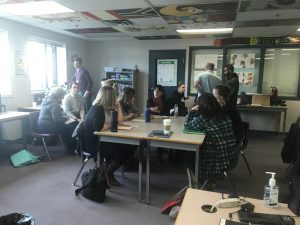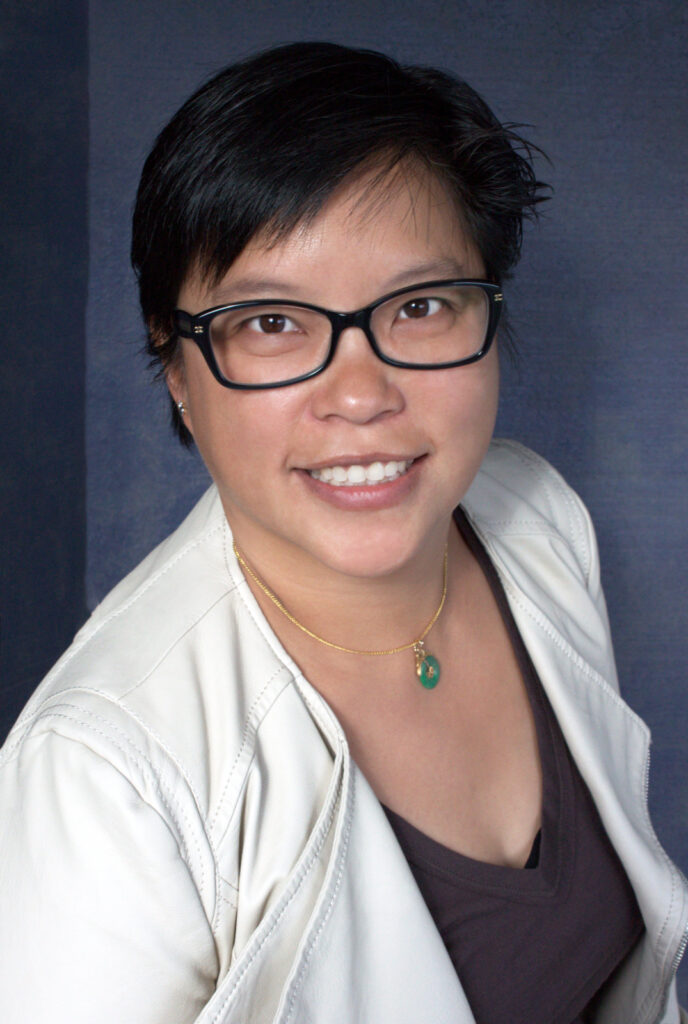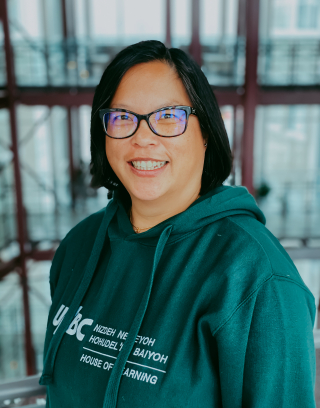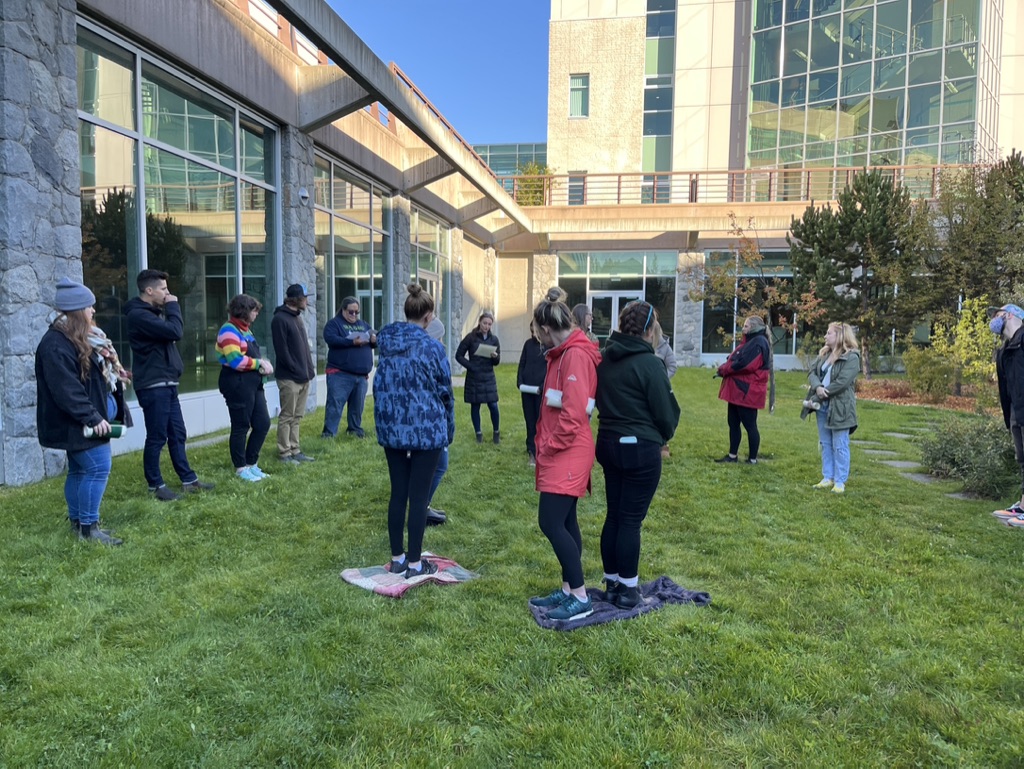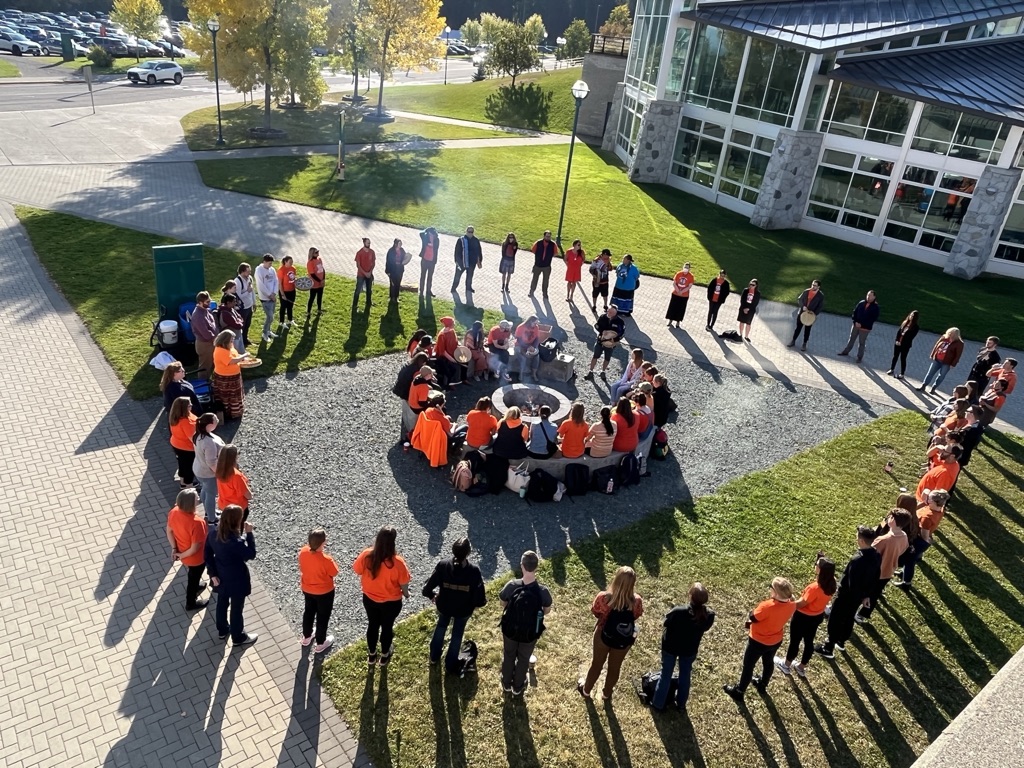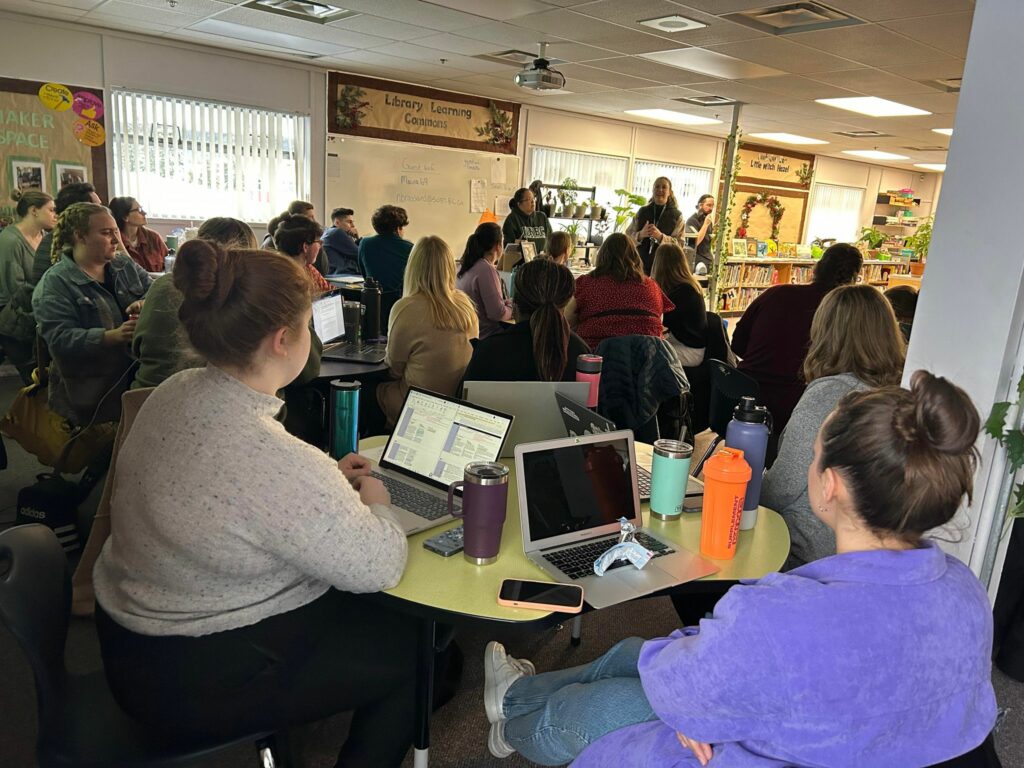Educators contribute to the profession.
LOOK AT OUR WORK (behind us). Working with these two on a learning activity that we will eventually video. Looking at senior math, BC’s New Curriculum, and Indigenous Education. Complex. New territory. Co-constructing our learning. Super fun!!! pic.twitter.com/Zd80zmIlcc
— Dr. Christine Ho Younghusband (@ChristineYH) March 8, 2019
Open Schools BC and Development of Math Videos (Secondary)
IN I had the unique opportunity to be invited by the BC Ministry of Education to participate in a working group with BC Secondary Mathematics Teachers to create videos for Math 10-12 that best reflected BC’s New Curriculum. There were 12 of us who work in the K-12 system in either public schools, independent schools, or teacher education. During the three day face-to-face meeting in Victoria, BC, we took the time to co-determine what the math videos would be about and then split into 5 groups. We decided to split our working group into the 4-curricular competency categories in the Math K-12 curriculum:
-
- Reasoning and Modelling
- Understanding and Solving
- Communicating and Representing
- Connecting and Reflecting
… and one group that focused on the First Peoples, Metis, and Inuit worldview and perspectives based on the two Math K-12 curricular competencies of:
- Engage in problem-solving experiences connected with place, story, cultural practices, and perspectives relevant to local First Peoples communities, the local community, and other cultures
- Incorporate First Peoples worldviews, perspectives, knowledge, and practices to make connections with mathematical concepts
Math Video 5 resonated with me because I was also working with the First Nations Steering Committee (FNESC) and First Nations School Association (FNSA) and part of the writing team to revise and update the Math Teachers Resource Guide (TRG). Being a part of this group was especially exciting because we did not choose in our working group to have either 4-groups that includes the First Peoples Principles of Learning (FPPL) or videos that had a Canadian Indigenous lens, but we chose both. I wanted to be part of Group 5 so that I can deepen my understanding of FPPL but also take what I learned to this project. I had the opportunity to work with Max Sterelyukhin and Jared Hamilton.
Max teaches in an independent school in the Lower Mainland and Jared works in a northern rural community as a math teacher lead. I work as a teacher educator at the university. We had a diverse group but one common passion: SECONDARY MATHEMATICS EDUCATION. We were challenged by the premise of the project itself. We had to imagine and create a math video that would best capture all that is good about BC’s New Curriculum. Math 10-12 was just being implemented and the intentions of this project was to help current practitioners on how to make senior mathematics competency based, include the First Peoples Principles of Learning, and embed formative assessment strategies. To further our challenge, we wanted to start with the First Peoples perspective, then think of “the math.”
What I found more amazing about this process is, all three of us were non-Indigenous secondary math educators. We all approached this project not as “experts” but as LEARNERS. We came from a place of curiosity and care. We are all scared poopless, but also very excited. We reached out to knowledge keepers and thought of way on how this project could be personalized in PLACE, how to keep the content local, and think about “What math do you see?” (instead of doing the reverse of starting with the math and looking for connections to the FPPL and the two curricular competencies mentioned above). We started our journey together with the Bentwood Box as a metaphor of where our learning (and math video development) can start. In the end, we formed and incredible learning community, created a video, and “broke some rules” to get things done.
BC Association of Mathematics Teachers Fall Conference
Max shared our learning experience as a professional learning community at the UBC Aboriginal Math K-12 Symposium. I was not able to make it that day to co-present, but Max and I presented at the BC Association of Mathematics Teachers (BCAMT) Fall Conference 2019. We had a great audience but we wanted to share our learning experience but also help other non-Indigenous math educators on how to embed the FPPL into their practice as math educators, connect with community and the local First Nation to gain knowledge and understanding of that local community in terms of protocol, traditions, and artefacts to consider, and how this venture is best taken with others. Learning should not be done in isolation. Find a learning community. Talk to elders and knowledge keepers. BE THE LEARNER. That’s all we can be. We were so grateful for this experience at the Fall Conference to share our professional learning with others. We hope the math videos will be published soon. We do not know the final product per se from OSBC, but we are tickled pink to have had the opportunity to learn together, work together, and collaboratively contribute to BC Math Education and implementation of BC’s New Curriculum.

